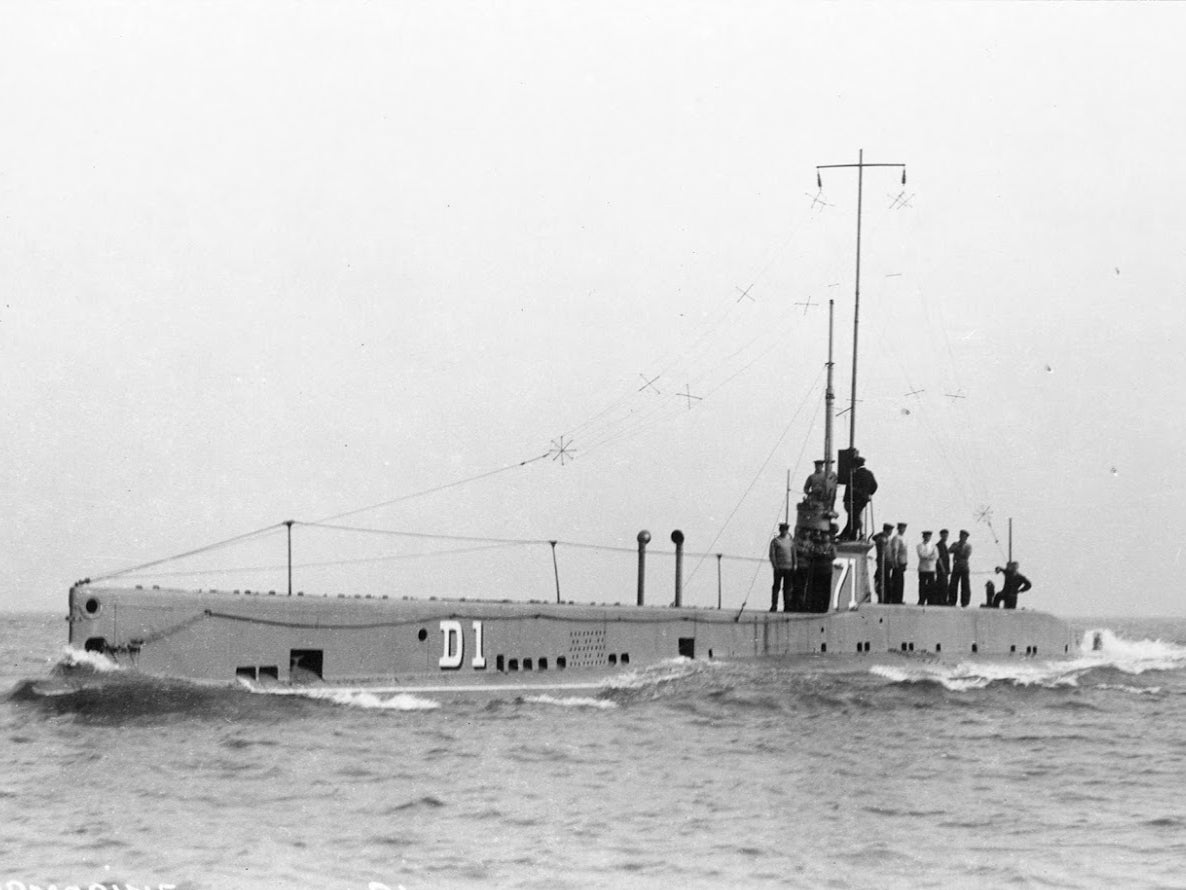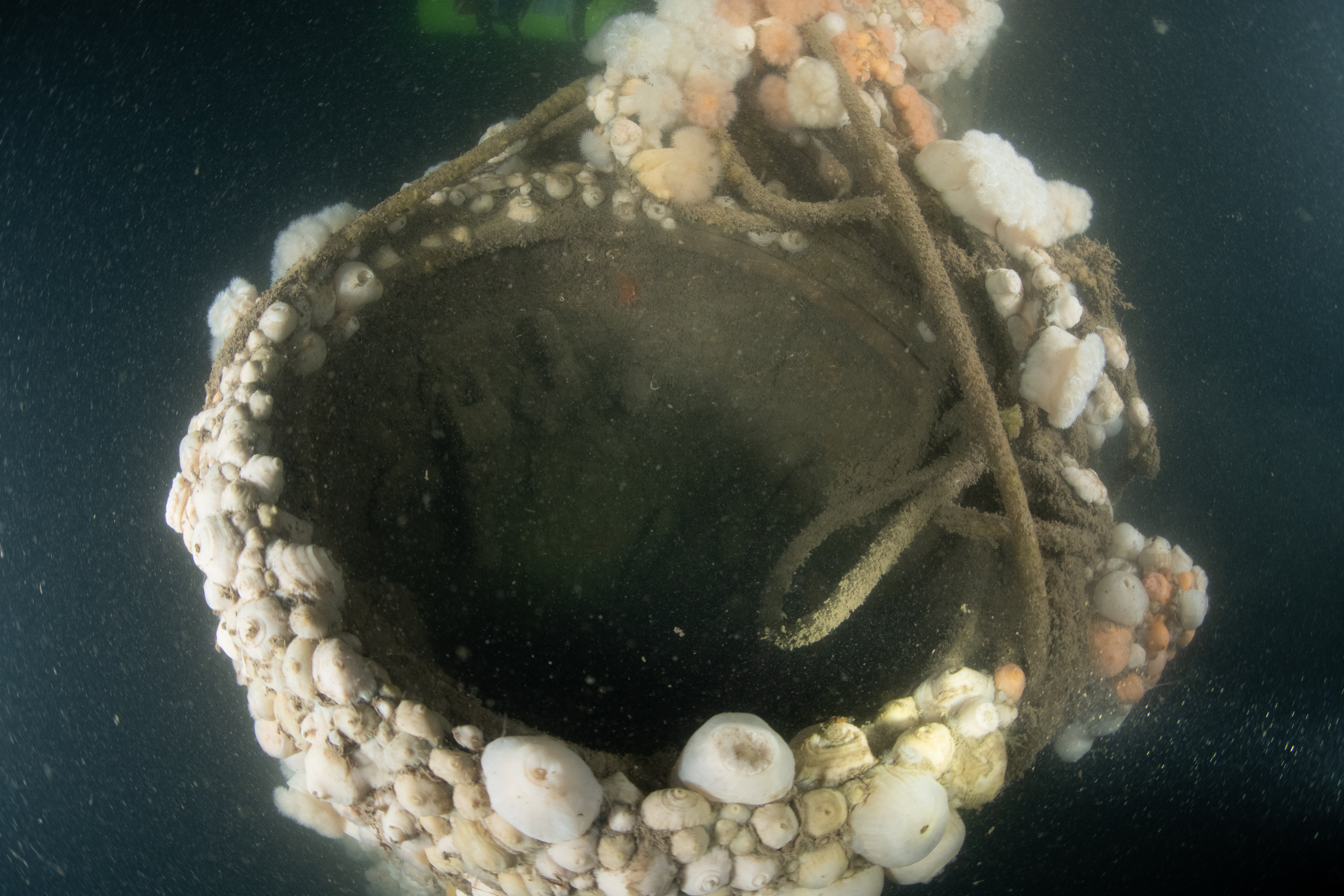Researchers discover the world’s first truly modern submarine – deep under the English Channel
Divers have now been able to film the pioneering vessel which helped Britain to naval victory in the First World War
Your support helps us to tell the story
From reproductive rights to climate change to Big Tech, The Independent is on the ground when the story is developing. Whether it's investigating the financials of Elon Musk's pro-Trump PAC or producing our latest documentary, 'The A Word', which shines a light on the American women fighting for reproductive rights, we know how important it is to parse out the facts from the messaging.
At such a critical moment in US history, we need reporters on the ground. Your donation allows us to keep sending journalists to speak to both sides of the story.
The Independent is trusted by Americans across the entire political spectrum. And unlike many other quality news outlets, we choose not to lock Americans out of our reporting and analysis with paywalls. We believe quality journalism should be available to everyone, paid for by those who can afford it.
Your support makes all the difference.British divers and a US–based naval historian have succeeded in discovering the world’s first truly modern submarine – at the bottom of the English Channel three miles off the coast of Devon.
Built 112 years ago, she had much greater effective range than any other submarine that existed at that time and was more powerful than any of its competitors.
With its greater range and capability, it changed the nature of naval warfare.
Marine archaeologists and divers have known for many years that the wreck of an early submarine lay off the south Devon coast but they believed that it was a First World War German U-boat.
Now, however, after three years of research, historians and divers have concluded that the sunken vessel wasn’t German after all but was a pre-War British prototype known as D1. The wreck is of huge international importance because she was the world’s first genuinely offensive, rather than purely defensive, submarine.

Her cruising range of 2,000 nautical miles (50 per cent greater than any other British submarine at the time of her commissioning) and her greater manoeuvrability, speed, size and power temporarily gave Britain a significant naval advantage.
But D1 was also part of an arms race in which the Germans launched the U5, almost as technically advanced, less than a year after the D1 had gone into service. The newly rediscovered epic British prototype long-range submarine is of such great historical importance that, on Historic England’s advice, the government has now scheduled her as a protected historic monument.
D1 was able to remain at sea for at least a week and was therefore able to hunt down enemy warships, rather than merely defending Britain’s ports, as her less-robust predecessors had done.

She was six metres across, 50 per cent wider than previous British submarines. Her width gave her increased buoyancy and stability and made her much more robust and seaworthy.
Crucially, she was the world’s first long-range submarine to be diesel-powered, rather than petrol-or-paraffin-powered – and that made her much safer, with a massively reduced risk of explosion and fire.
What’s more, she had two propellers, which helped give her an ability to change direction much more rapidly.
And last but not least, she was the first royal navy submarine able to fire torpedoes from her bow and her stern – which gave her and the other D class submarines, which were built after her, an ability to attack enemy vessels without having to turn through 180°.
D1 completely changed the navy top brass’s attitude to submarines. In large–scale wargame manoeuvres in 1910, she was so successful that she utterly transformed naval thinking.
Her performance, “opened the eyes of the first sea lord, Admiral Sir Arthur Wilson, to the offensive possibilities of submarines, which he had hitherto regarded as defensive vessels”, wrote Commodore Roger Keyes, who was head of the navy’s submarine service between 1912 and 1915.
Although D1 was the world’s first truly modern submarine, she met an ignominious end – being scuttled in the Channel to act as a detection target to help the Royal Navy develop top-secret submarine detection systems.
She was probably used during the navy’s very first experiments to develop sonar technology.
D1 had been the prototype for seven other D class submarines – and ultimately for the 55 E class subs which helped Britain defeat the German navy in the First World War.

Naval historian Mark Harris says: “D1 is of great historical significance because it was the original prototype for most of the British offensive submarines which fought in World War One.
Mr Harris, author of a book this autumn about D1 and other Great War submarines, adds: “Archaeologically D1 is also very significant, because she is potentially the best-preserved British submarine that served in World War One.”
The identification of the wreck as the D1 has taken several years. Divers and historians compared underwater photographic close-ups with an original plan of the submarine. After comparing the torpedo tube arrangements, the propellers, the rudder, the conning tower and more than 16 other features, they concluded that the craft was indeed the D1. A final assessment of the evidence was carried out by consultancy Wessex Archaeology and, on the advice of Historic England, the government has now given the wreck official legal protection.
“The submarine’s rudder arrangement was the main feature which convinced us that it was not a German craft,” says Michael Lowrey, the US–based historian responsible for identifying the wreck.
“We then began to suspect it was a British submarine. Careful examination of other features on the vessel and a detailed study of naval records then narrowed it down.”
The wreck was identified by Mr Lowrey based on detailed information obtained by a team of British technical divers, skilled at working at depths of over 50m, led by Steve Mortimer.
“Every diver dreams of identifying a historically important wreck,” says Mr Mortimer. “Expecting to find the remains of a German U–boat, we were thrilled to discover a ground–breaking British submarine instead. It’s tremendous that D1 is now protected but divers can still visit.”
D1 was built by Vickers at Barrow-in-Furness, launched in 1908 and commissioned in September 1909.
At the start of the war, the vessel was assigned to protecting the coast of Dover from enemy invasion before carrying out patrols outside UK territorial waters to monitor German shipping.


Join our commenting forum
Join thought-provoking conversations, follow other Independent readers and see their replies
Comments